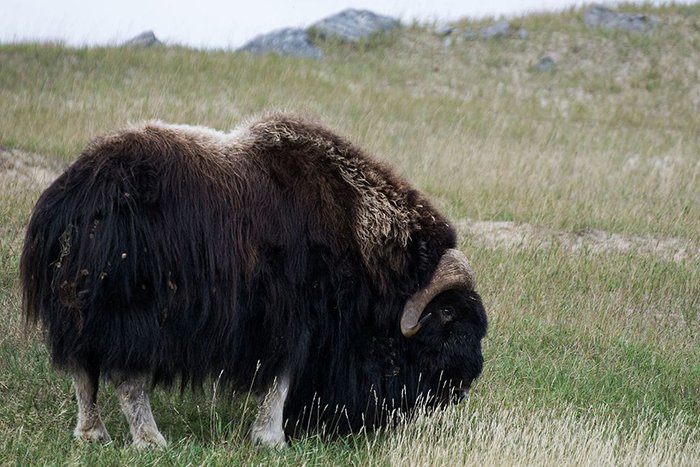Musk Ox
By 0x010C (Own work), via Wikimedia Commons
Above photo by 0x010C (Own work), via Wikimedia Commons
Musk oxen are members of the caprine (sheep/goat) kind that live in the frigid Arctic all year long. This kind was created on Day Six of Creation Week and includes familiar animals such as domestic goats and bighorn sheep.
During the short summer, musk oxen feed on grasses and flowers, building up enough fat to help get them through a long, cold winter. In the winter months, they must dig through the snow to reach roots, mosses, and lichens.
Because musk oxen are designed for the cold, they can’t run for very long without overheating. So how do they escape from predators? They form a circle, with their young in the middle, and use their sharp horns to fight off wolves or bears while protecting their young. Both males and females have horns, which they keep all year round.
Here are some fun facts about musk oxen.
- Multiple musk ox are called musk oxen.
- Baby musk oxen can keep up with the herd a few hours after birth.
- During the Ice Age (after Noah’s Flood), musk oxen could live as far south as Kansas!
- Musk ox can also be spelled muskox or musk-ox.

By 0x010C (Own work), via Wikimedia Commons
A Muskox at the Wild Zoo of St-Félicien (Quebec, Canada).
Class: Mammalia
Order: Cetartiodactyla
Family: Bovidae
Genus/Species: Ovibos moschatus
Size: 4–5 ft
Weight: 500–800 lbs
Diet: Roots, mosses, lichens, grasses, and flowers
Habitat: Arctic tundra in Canada, Greenland, Alaska, and Russia
Life Span: 12–20 years
Special Design Feature: Musk oxen have two layers of hair. The top layer is thick and long to keep snow and rain from getting to the shorter, insulating coat. This second coat is the lightest, warmest wool in the world, and protects the musk oxen from the frigid Arctic winter.
Did You Know?
Musk oxen are the second largest animals to live on the Arctic tundra. Only polar bears are larger.
Learn More
Related Downloads
Shaggy the Musk Ox Coloring
PDF Download- © 2025 Answers in Genesis
- Privacy Policy
- Contact
- About
